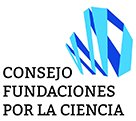Left behind are the times where TikTok was nothing more than a hurricane of viral dances. Its’ve learned to grow up, leaving behind the idea that is just a platform to gain exposure, for the sake of it; likes without content. Right know it has become an opportunity melting pot. Obviously, the entertainment remains but now covering important content. So, definitively is “the” place to catch the attention of the fleeing teenagers. The 64% of the so-called Z generation, born after the year 2000 and 34% of world´s population, uses this platform. In 2021, there were 656 millions of users, but is predicted, according to insider, that by the end of 2023 to have more than 800 million.
TikTok is a very peculiar social network. Besides leaning only to using short videos as its product, it differences from others, such as twitter, Facebook, or Instagram in showing content that may be interesting to you regardless of its origin (normally on TikTok videos from people never seen on the platform by us is shown). This concept catches so much interest that Instagram and Facebook are looking to imitate it.
According to Clara Nellist, a CERN researcher and science communicator on TikTok, the platform likes just peeking into people’s worlds and finding out things in a short way. If, hopefully, it´s science, that will be shown.
From its beginnings in China, the platform has had a substantial number of tools, primarily those associated with viral trends (sounds, face filters and edition/recording tools among others). The use of these tools is rewarded by the platform, showing those videos to a larger crowd. By this, science Communicators can adapt their divulgatory language using the huge array of options given by TikTok. The most popular tool is the green screen, where an image can be used as a background and the communicator can make an explanation (as seen here).
“Now a days the consumers do not distinguish the media from the content” says Magdalen Trapiella, Marketing director at Mediacom Spain. This format “must transmit science with precision, but also has to be entertaining and approach the topics with touch, sensibility and nuance” writes Rin Raphel, Wellbeing journalist. Clara Nellist adds that the audience has a noticeably short attention span, so it will always be better a fifteen second video than 3 minutes one.
Papers addressing the usage of TikTok is increasing ( Here, here, here and here). The writers behind a paper from Frontiers in sports and active living, believe that “the widespread use and popularity of TikTok suggests that this platform has potential to be a source for healthcare information for younger individuals”. The COVID-19 pandemic raised this issue to the mainstream. And poses a problem from the two faces of any social network: to the content creator and for the consumer.
Clara Nellist, as a content creator, before the pandemic worked in science communication face-to-face for schoolers, but the pandemic shut off all those activities, and so she poured all to the social networks, especially to TikTok, to keep the science popularization.
For the content consumer side, people needed, especially from the pandemic, a trustworthy source of scientific information. An article from the journal of Microbiology and Biology Education has an interesting point: “Increasing use of social media during the COVID-19 pandemic practice of social distancing has emphasized the value and power of effective science communication through social media.”
But everything is not sweet as honey. Given that anyone can upload a video to social networks, there is a huge amount of misinformation that goes viral. A New York Times Article about misinformation on TikTok said that “ there is “science-washing,” a term debunkers use to describe how pseudoscience creators deploy scientific-sounding language to weigh in on health issues, cherry-pick studies to support false claims or cite studies that seem relevant but are not
Disprove misleading claims on what the position on the subject really is for current science, can be a stimulus for communicators and scientists to enter the world of social networks. Besides, this subgenre is highly popular on TikTok.
An article that studied the impact of COVID-19 Vaccines summarizes the potential and reach that the social network has: “This tendency has to be taken in account to plan interventions that promotes vaccination (or other biomedical activity) among teenagers”.
It´s worth to take in account that TikTok is not meant for networking or to promote a newly published paper. LinkedIn or twitter are the best for that. This platform, by its reach, tools, and diversities of communicational languages, can be a gateway to show the world, especially the Z generation, the day to day of science protagonists. Reaching the new generations needs inescapable the usage of their own communication networks and obviously, their language. There seem to be no other way to show teenagers that behind the curtain of science, there is normal people that are eager to tell you everything about it and them.


